Togo is a small country indeed, but it is packed with a diverse and exciting culture. When described as the birthplace of the voodoo rites and home to many animist cults, the country quickly excites the imagination. While reality is often quite different from Hollywood and you are unlikely to find voodoo dolls and zombies in Lomé, you`ll find that the voodoo religion (spelled vaudou here) is still very much alive and kicking, with the locals partials to occasional sacrifices and prayers. During our research trip in Togo, we’ve encountered multiple trinkets, ceremonies and rituals and here is a few of them!
Before we start however, we should establish the difference between animism and voodoo, two traditions that are very much alive on the West Coast of Africa and are distinct even though they are often working in symbiosis, with locals using both animists fetishes (fétiches) and voodoo guardians. The difference, to make it very short, is that the fetishes of animism are general immaterial spirits. As such, they represent forces of natures or surnatural beings which do not have a clear form. They can be, for example, the force of a tree, a sacred stone or river. When it comes to voodoo, however, the veneration is made to an idol, which has a clear form such as a statue, which will often be man-made and humanoid.
In the fetish market of Lomé
For a quick and easy introduction to the world of fetishes one should look towards Lomé (rather than Berlin or Tokyo, well, that depends on which kind of fetish one is looking for). The capital of Togo hosts the biggest fetish market of Africa and while it might have become slightly touristy, the stuff you’ll find there is still legit.
Here, healers and prophets alike come to make their shopping lists based on recommendations from witchdoctors, also called wise men or voodoo priests. Here are a few hot items.
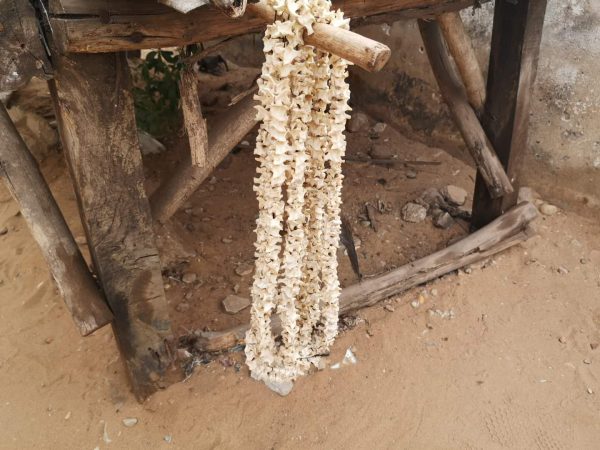
When going to a party or a traditional celebration, some Togolese will like to wear an anaconda’s spine as a necklace.
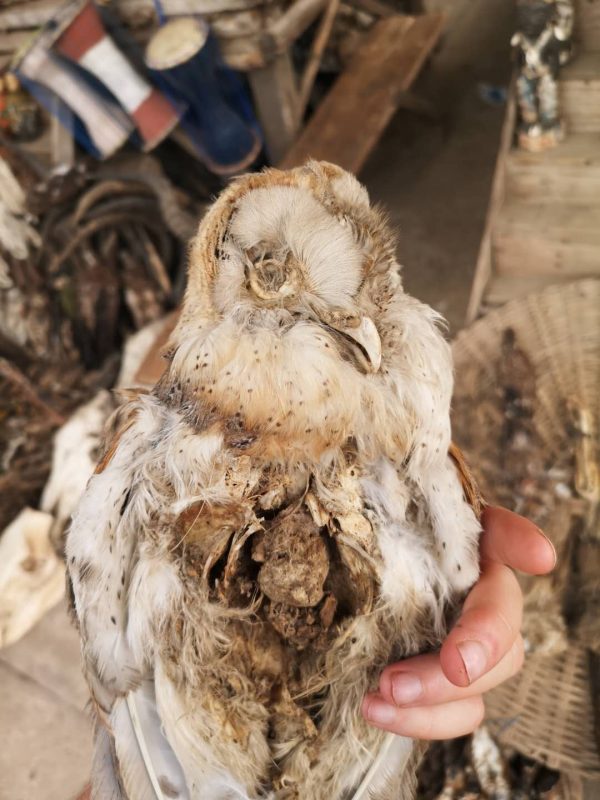
An owl is a famous remedy against certain diseases and witchcraft. It is first burnt to ashes and grinded and then affected people cut themselves and put the ashes in their cut (Needless to say, do not try this at home or without the supervision of a potent witchdoctor of good repute)
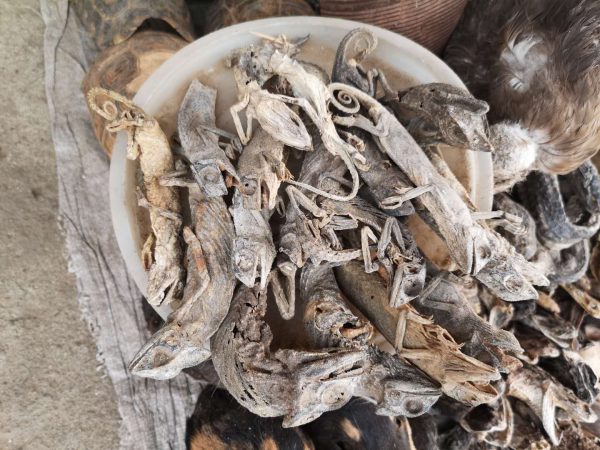
If you suffer from bad luck and it seems unnaturally bad the fétichiers (fetish masters, no, not Hans and Walter dressed in latex) of Togo recommend to grind a dried chameleon, mix it with a (also grinded) parrot along with soap and bath yourself in the concoction to wash away the bad luck.
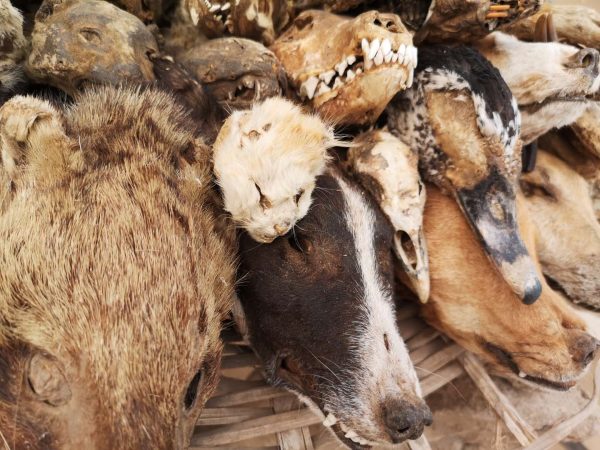
Finally, and this one is not the most PC, a cat’s head, grinded (there is more grinding in animism than in a reggaeton music video) and put in your favourite drink will help your memory and, our guide says, give you a nice voice.
Trinkets
Some of the fetish magic is not centered around potions, soaps and salvas but rather in trinkets or grigri as they are called around here. Not only are they probably much more sanitary but they are also incredibly varied.
For example, while visiting the temple of the fetish market, we were introduced to four trinkets:
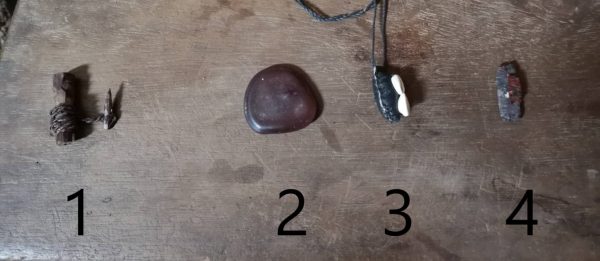
The trinket #1 is a safe-journey grigri. In the pointy stone there is a hole. Before undertaking a journey, you should make a prayer in it such as ‘’I wish that I do this journey from Saint-Jean-Port-Joly to Skegness and back in peace and safety to be reunited to my family which I love’’ and close the hole with the pointy part. You can then conceal the charm in your pocket or in your luggage. Once the journey has been made successfully, unplug the hole to reset it.
Trinket #2 is a memory stone. Recommended for students, after a long evening of study, they should drop 7 drops of water on the stone before rubbing it to their head from left to right three times and then from right to left before putting it under their pillows and going to sleep. The next day, they’ll find that they will have retained much more information than they would have without the stone.
Trinket #3 is a anti-poison amulet. If you’re visiting the Freys or other bannermen of ill-repute, wearing this trinket might save your life. If you wear the trinket and something that has been poisoned is given to you, you will see a red hue around the object, be it food or a cup of millet beer. You should then avoid drinking it, but the priest who introduced these objects to us said that even if you try to grab a poisoned cup, it will break or you’ll drop it as such is the strength of the amulet. If, after that happens, you’re still staying for dinner, you’re either dumb or a profound sceptic.
Trinket #4, finally, is a trinket for long-lasting relationship. The woman holds it in her hand and the husband drops seven drops of her perfume on it. Afterwards, he closes her hand and hold it and they pronounce in turns, vows to stay together, be truthful and love each other forever. The husband and wife will then, hug (judging by the wink our translator gave us, we`re guessing that it’s the kind of hug used to make babies). Then, the man should sleep with it under his pillow and his wife and his dreams will then forever be intertwined (sounds awful) and, no matter the distance or the situation, they will understand each other and stay together. The charm is broken once one of them dies (due to practicality and commonness of death in West Africa, there’s a lot of rites facilitating remarriage and moving on, which would make for a formidable article, going on.) and the partner outliving the other is free to go hug merrily again.
Altars, natural points of power and statues
Finally, we’ll be looking at altars and statues which we have found around Togo. Generally, when it is altars and points of power, we’re talking about animism or fetishism. Statues, which have humanoid shapes, are voodoo. We talked about that, didn’t we? If you don’t remember, go rub a stone on your forehead and come back.
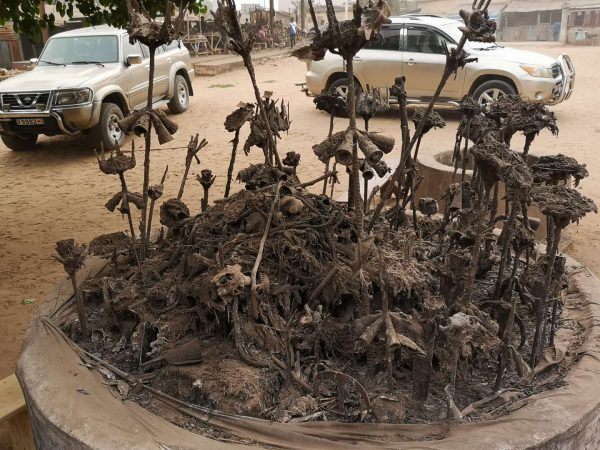
In the fetish market of Lomé, you’ll find an altar of iron. This altar is there to collect offerings from anyone whose profession is related to iron, such as blacksmiths and so on. Offerings, such as chickens, are given to the altar along with prayers and are expected to bring good luck and prosperity to the supplicant.
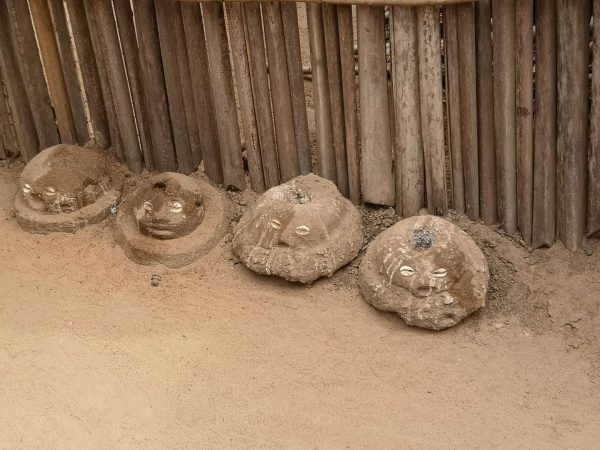
In Togolese villages, you’ll often find these small pot like figures with faces. Those are guardians of the house. They should be as numerous as there are people in the household. Each of them are poured sodabi on their head or get some chicken slit above them as an offering. If an intruder invades the house, they will be instantly blinded and will wander around the house knocking stuff down until somebody gets them, like uncle Jerry on Christmas night.
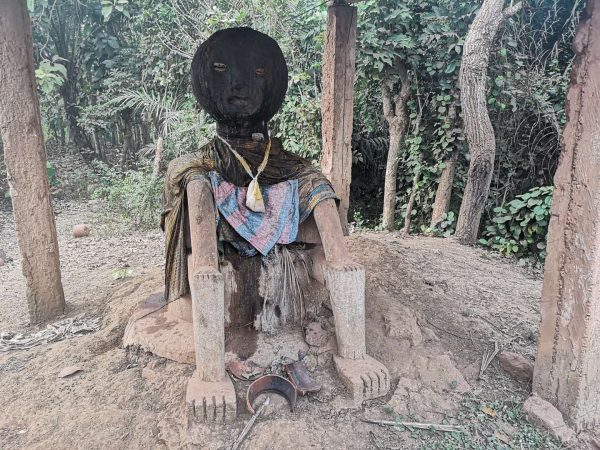
In front of Togolese villages, you’ll often find this kind of intriguing guardian figures called Douleba. Those statues are guardians which scan the mind of foreigners entering the village. If one comes with bad intentions in the village, he’ll instantly be motived to leave, either remembering they left something on the stove or being struck by intense bowel movement.
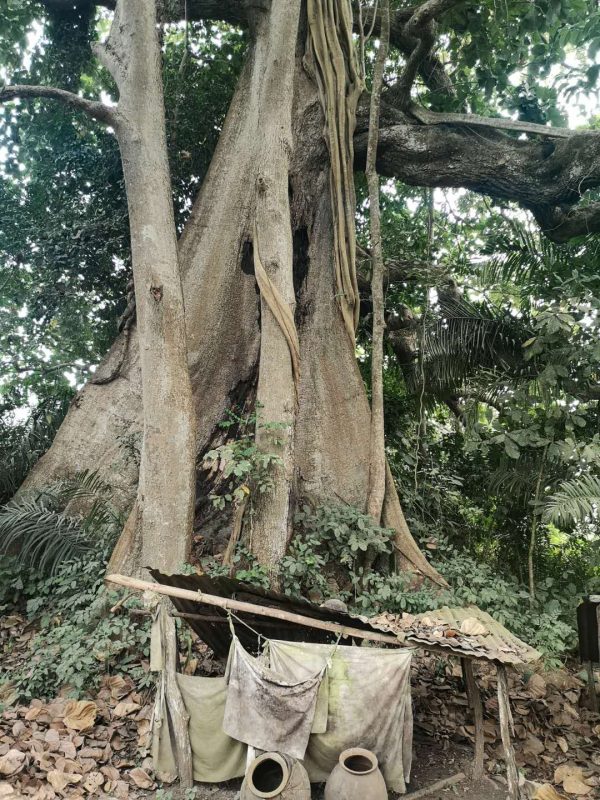
Finally, in the village of Aveve, you’ll find this massive tree. It is a famous job tree. People from all around Togo and beyond come here to plant a stake behind it and make a prayer to get a job or a promotion. Along with this prayer, they will make a promise to come back and make a sacrifice if their wish is granted. It is said that famous politicians, on the way to become presidents, have come here under the cover of the night, to make sure of their election.
While a bit tongue in cheek for your entertainment, dear reader, we hope that you’ve liked this short insight in the fascinating world that are the animist and voodoo traditions of West Africa. A land where magic and the supranatural hasn’t disappeared and are still a part of people’s everyday life.





